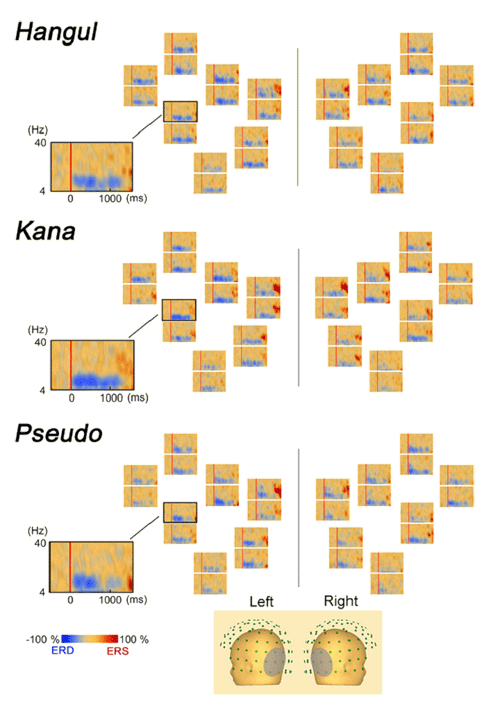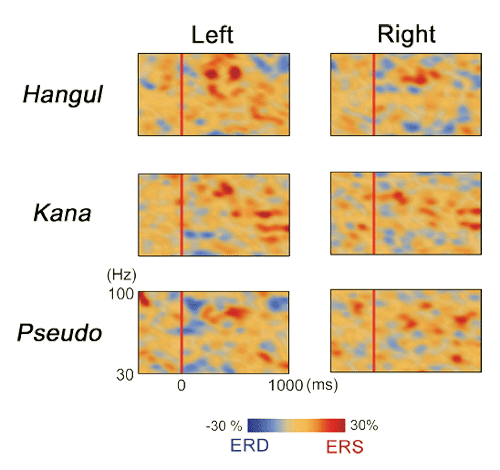The objective of this study was to reveal the oscillatory activity in the occipitotemporal area related to the visual perception of the letters of first (L1) and second languages (L2) and pseudoletters. We recorded neuromagnetic signals while Korean native speakers were exposed to a phonogram of Korean, acquired at school age as their L1 (Hangul), that of Japanese, learned in adulthood as a L2 (Kana) and pseudoletter (Pseudo), and quantified the event-related desynchronization (ERD) and synchronization (ERS). In all conditions, sustained ERDs in the alpha band were observed in both hemispheres. ERD for Pseudo was gradually attenuated after approximately 400-500 ms after stimulus onset, whereas both Hangul and Kana produced stronger and longer-lasting ERD. ERD for Kana showed a broader alpha band than Hangul. Furthermore, transient ERSs in the gamma band around 70 Hz were observed between 100 and 400 ms in the bilateral occipitotemporal areas. In the left hemisphere, gamma band oscillations showed similar enhancement in all conditions, suggesting that gamma band activity in the left occipitotemporal area might be enhanced not only by the bottom-up process as visual perception but also by the top-down process as attention to prelexical visual stimuli. In the right hemisphere, gamma band ERS was stronger for Hangul than Pseudo and no differences were shown between Kana and Pseudo. The differences of oscillatory activity in the alpha and gamma bands suggest that neuronal networks, including the occipitotemporal area, are related to the visual perception of letters differing between L1 and L2.
Ihara A & Kakigi R: Oscillatory activity in the occipitotemporal area related to the visual perception of letters of a first/second language and pseudoletters. Neuroimage, 2006;29:789-796.

